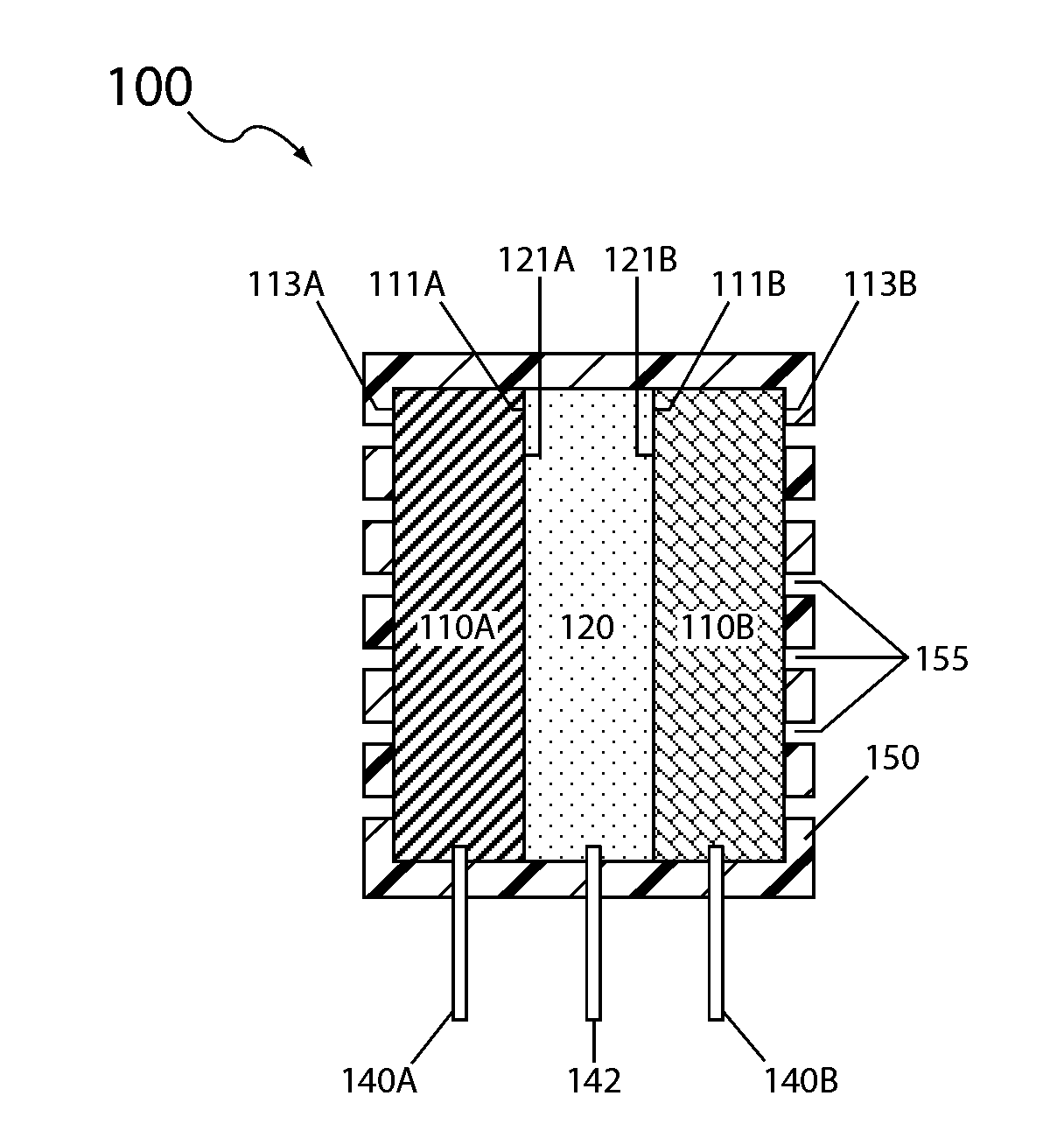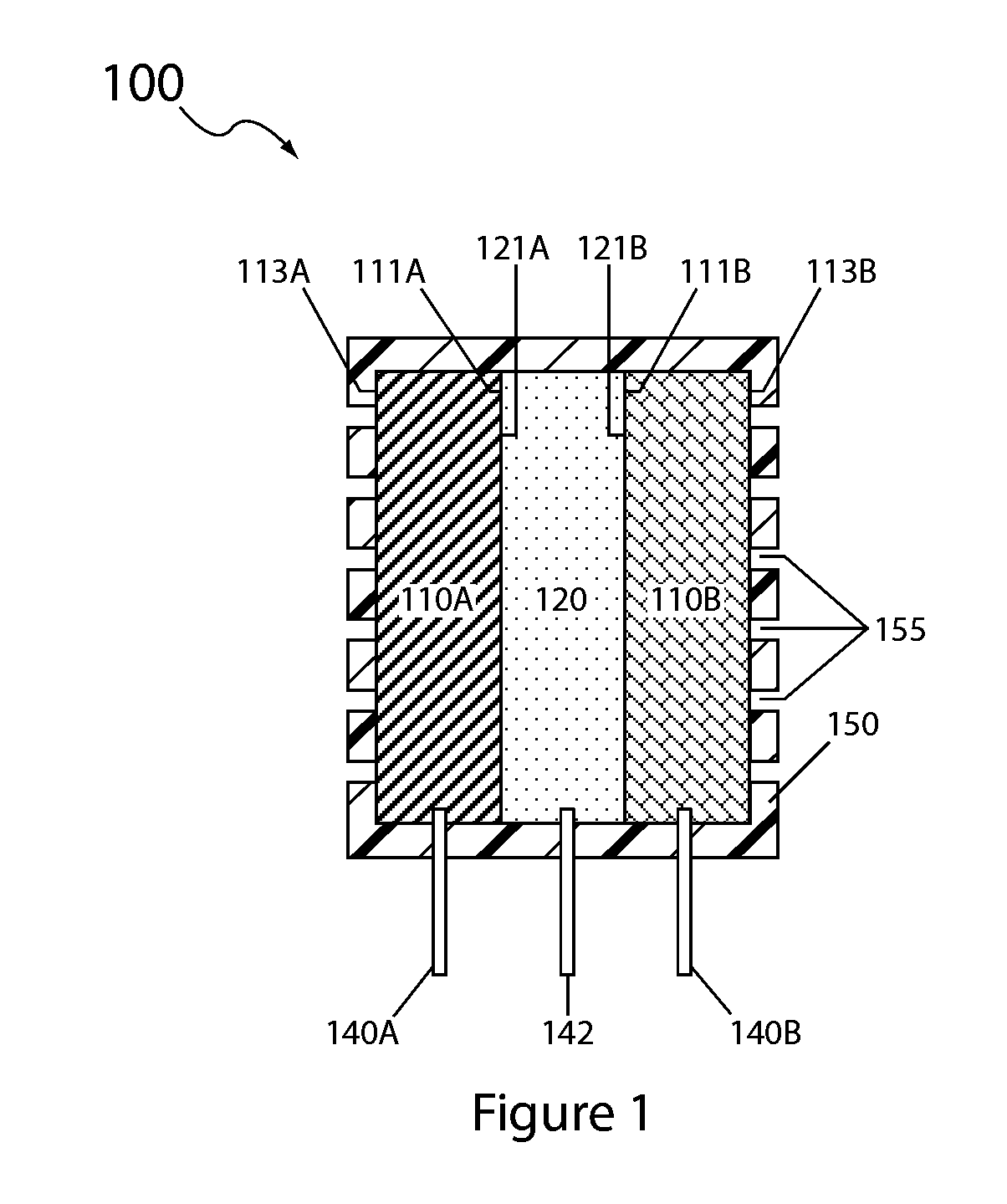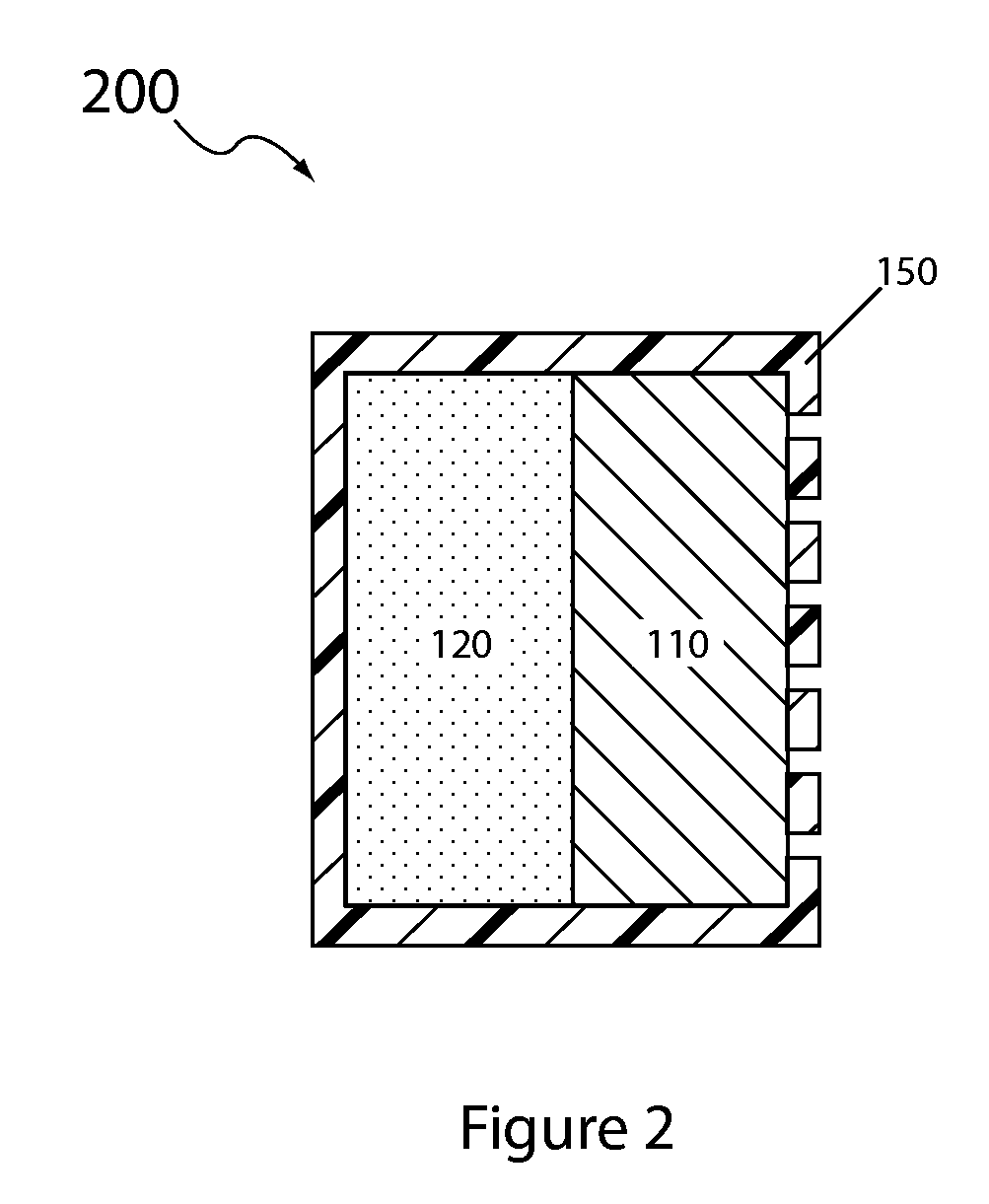Cathode architectures for alkali metal / oxygen batteries
a cathode and oxygen battery technology, applied in the field of alkali metaloxygen batteries, can solve the problems of limited power density, cell polarization, and limited ampere-hour capacity density and cycle life, and achieve the effects of reducing the number of lithium air cells
- Summary
- Abstract
- Description
- Claims
- Application Information
AI Technical Summary
Benefits of technology
Problems solved by technology
Method used
Image
Examples
first specific embodiment
[0119]With reference to FIG. 4, in a first specific embodiment the instant battery cell 400 has an architecture that is both partially dry and entirely wettable.
[0120]The porous structure, and in particular the pore composition, is tailored, as described above, by controlling, in combination, the pore size distribution as a function of architecture thickness and the amount of liquid electrolyte in the architecture. The porous structure includes large gas pores extending throughout the depth of the electron transfer layer 450 and small liquid filled pores in the passive layer 470. Specifically, the electron transfer layer 450 has a pore size distribution defined by both macropores and mesopores and a separator layer 470 having a pore size distribution defined by micropores and / or small mesopores that have a pore size smaller than the smallest pores in the electron transfer layer.
[0121]As the architecture is partially dry, the amount of liquid electrolyte is sufficient to fill all the...
second specific embodiment
[0125]Continuing with reference to FIG. 4, in a second specific embodiment, the instant cell 400 is the same as that which is described above in the first specific embodiment except that in this second embodiment the passive layer has a different type of porous structure; namely a pore size distribution defined by macropores and / or large mesopores which are smaller than the smallest gas-filled macropores in the electron transfer layer. In this specific embodiment, the electron transfer layer has a pore size distribution defined by liquid-filled micropores and / or small mesopores as well as gas-filled macropores. Moreover, in certain embodiments, where high capacity density is paramount, the passive layer has a total pore volume equal to or larger than the total volume of macropores in the electron transfer layer, and may, in certain embodiments, be equal to or larger than the total pore volume in the electron transfer layer. By this expedient the large pores in the passive layer serv...
third specific embodiment
[0129]Continuing with reference to FIG. 4, in a third specific embodiment particularly suitable as a high capacity primary cell, the instant cell 400 has: i) a flooded electrolyte configuration; ii) an electron transfer layer 450 having a pore size distribution defined in part or in whole by micropores and / or mesopores; and iii) a separator layer 470 having a pore size distribution defined in whole or in part by macropores that are larger than any pore in the electron transfer layer, and in certain embodiments may be the largest pores in the entire architecture.
[0130]The separator layer preferably has a large total pore volume for accommodating significant amounts of solid phase discharge product. In various embodiments, the total pore volume in the separator layer is equal to or larger than the total volume of macropores in the electron transfer layer and may be equal to or larger than the total pore volume in the electron transfer layer.
[0131]In alternate embodiments, the electron...
PUM
| Property | Measurement | Unit |
|---|---|---|
| Pore size distribution | aaaaa | aaaaa |
| Size | aaaaa | aaaaa |
| Radius | aaaaa | aaaaa |
Abstract
Description
Claims
Application Information
 Login to View More
Login to View More - R&D
- Intellectual Property
- Life Sciences
- Materials
- Tech Scout
- Unparalleled Data Quality
- Higher Quality Content
- 60% Fewer Hallucinations
Browse by: Latest US Patents, China's latest patents, Technical Efficacy Thesaurus, Application Domain, Technology Topic, Popular Technical Reports.
© 2025 PatSnap. All rights reserved.Legal|Privacy policy|Modern Slavery Act Transparency Statement|Sitemap|About US| Contact US: help@patsnap.com



